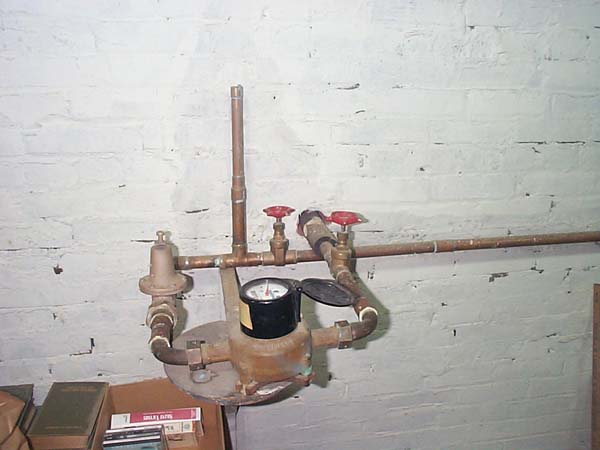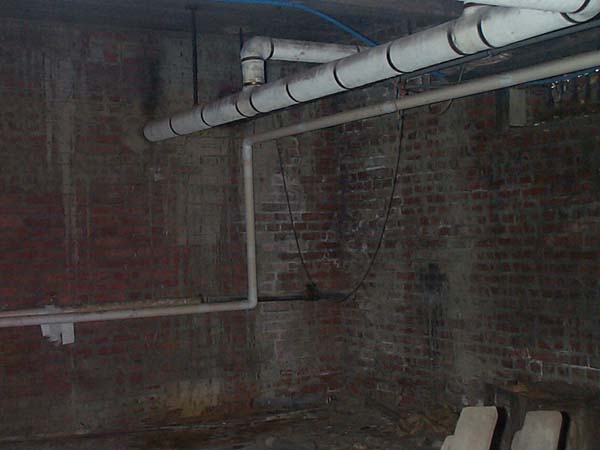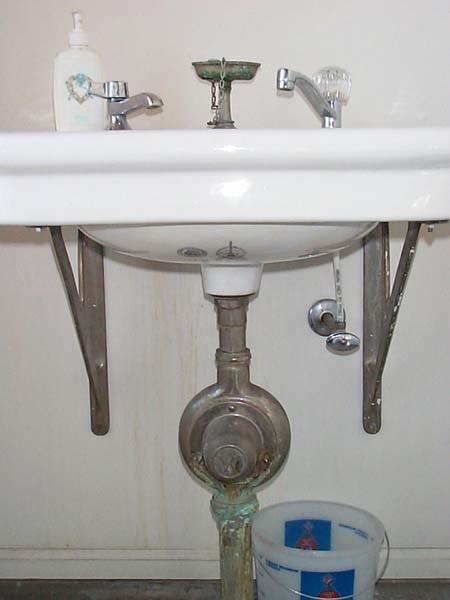Architectural Analysis
| Organizational
Layout Circulation Proportion and Scale Ordering Principles |
Engineering Analysis
Domestic Water
| The purpose of plumbing systems are to provide the building with safe drinking and running water and to remove waste water from the building. The plumbing systems of the Rolla Public Library are relatively simple. |
 |
The Rolla utilities provide the water and waste water removal lines to the building. They both enter into a crawl space on the east side of the building from Pine Street. From there, the water goes into the water meter on the south end of the basement, then into the dropped ceiling and circulates through the rest of the building. The sewer lines all end up in the main line of the building that heads into the crawl space then joins with Rolla utility lines. |
| The dark line that is coming in at
the corner of the wall is where the water line comes into the
building. The water pipes that supply the building are cast iron and once inside the building copper lines are used. The waste water pipes are cast iron and PVC |
|
|
For the water system, the library has no hot water
heater because there is no need for hot water. There is enough
pressure in the line for the water to circulate around the building
so an additional air compressor is not necessary. The water must
supply the following: three bathrooms, each single person bathrooms,
on the main floor; one bathroom in the basement that is also for
one person; one bathroom on the second floor on the north side
for one person; and two faucets on the outside of the building,
one in front of the building and the other in the back. There
is also a sink that is in a janitor's closet, but it is not in
use. The costs for water usage are around $16 per month, and very
low maintenance costs. For the sewer system, all of the sewer lines from individual bathrooms flow into the main sewer line of the building. As mentioned, there are a total of five bathrooms in the building, each with one toilet and one sink. There also used be another bathroom in the basement but it is no longer in use, although the sewer lines do still run through it. The line that runs from the handicapped restroom on the main floor runs through the downstairs airlock, which is basically like being outside because of the large gap under the outside door. This line has to be insulated because it will freeze in the winter do to exposure to cold temperatures. Also, because the building was built in 1914, the plumbing system is rather old, and the original sinks have very different traps from what is used today. |
| The line that runs from the handicapped restroom
on the main floor runs through the downstairs airlock, which is
basically like being outside because of the large gap under the
outside door. This line has to be insulated because it will freeze
in the winter do to exposure to cold temperatures. Also, because
the building was built in 1914, the plumbing system is rather old,
and the original sinks have very different traps from what is used
today.
The average cost for use of the city's utilities is $11 per month. Maintenance costs are very low for the sewer system as well. Overall, the systems are very efficient for the
usage that the building demands. Over time parts of it may have
to be replaced due to the age, but everything should be able to
last quite a while longer. |
The old type of trap on the sinks. |

